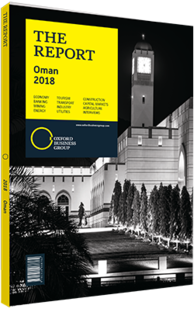Oman's low-cost airlines target broader range of travellers
With the sector dominated by four- and five-star hotels, tourism in Oman relies heavily on luxury and business travellers. However, in recent years the Ministry of Tourism (MoT) has been looking to tap other markets, including budget-conscious holiday makers. This approach has been aided by the arrival of cheaper airfares from foreign airlines and the establishment of Oman’s first low-cost carrier, SalamAir. Coupled with the building of more hotels outside of the five-star range, the appearance of budget airlines is poised to have a real impact on local tourism and the economy.
SKY-HIGH: SalamAir launched its maiden flight in early 2017 after the Public Authority for Civil Aviation (PACA), the country’s aviation regulator, began testing market interest in a low-cost carrier in May 2015. The airline currently links Oman with nine destinations, including airports in Saudi Arabia, Qatar, Pakistan and the UAE, with plans to add four new routes in 2018, including flights to and from Bangladesh.
The airline, which has three, 174-seat Airbus A320s, is aiming to break even within the next three to five years. During its first six months of operations, the airline carried over 220,000 passengers, putting it on its way to reaching its intended target of 500,000 passengers for the first full year and 22 airplanes by 2022. In July 2017 the airline announced plans to launch flights between Salalah and Ta’if in Saudi Arabia. “Since its launch, SalamAir has been committed to delivering on three key promises: to offer travellers in Oman and across the region a safe and reliable budget alternative, to represent Oman and promote its tremendous tourism potential and alternatively contribute to the economic growth of the sultanate,” Mohamed Ahmed, CEO of SalamAir, told local press in late 2017.
INCOMING ARRIVALS: While the launch of SalamAir was an important step, the arrival of other low-cost airlines is also likely to have a big impact on the number of people visiting Oman and the destinations available to them. In May 2016 the low-cost German airline Eurowings announced that it would begin operating two chartered flights per week between Germany and Salalah International Airport (SIA), Oman’s second-largest airport, with the first flight successfully arriving in October 2016.
The European airline is not alone in expanding its footprint: both Qatar Airways and Dubai Aviation Corporation, better known as flydubai, have added more flights to SIA during the khareef (monsoon) season, when visitor numbers to Salalah, the capital city of the Dhofar Governorate, increase three-fold.
In July 2017 Sharjah-based low-cost airline Air Arabia announced that it would operate three flights per week between Sharjah and Sohar, a port city on the northern coast, with one-way fares starting from OR20 ($60). Sohar International Airport, which opened in 2014, is set to become the third hub for international airlines in Oman, with Air Arabia and Qatar Airways also reportedly planning to begin direct flights, according to the PACA. SalamAir already has flights into and out of the airport, with regular services linking the city with Salalah and Muscat. Meanwhile, in November 2017 Indian budget airline SpiceJet opened a new office in central Muscat. The airline offers non-stop flights connecting Muscat with Ahmedabad in western India five days a week, with passengers then able to transit on to cities like Delhi, Mumbai, Hyderabad and Chennai.
OPENING UP: The arrival of SalamAir and the recent increase in the number of low-cost carriers operating in the sultanate is part of concerted efforts to connect Oman with other destinations.
“Having affordable airlines, plus more three- and four-star accommodation, will help Oman push into the mid-scale tourism market,” Srinith De Silva, CEO of Aitken Spence Resorts (Middle East), told OBG. The overarching goal is to open up the country to different segments of the market by increasing overall opportunities, boosting trade and investment in other regions, and attracting both leisure and business travellers.
You have reached the limit of premium articles you can view for free.
Choose from the options below to purchase print or digital editions of our Reports. You can also purchase a website subscription giving you unlimited access to all of our Reports online for 12 months.
If you have already purchased this Report or have a website subscription, please login to continue.

